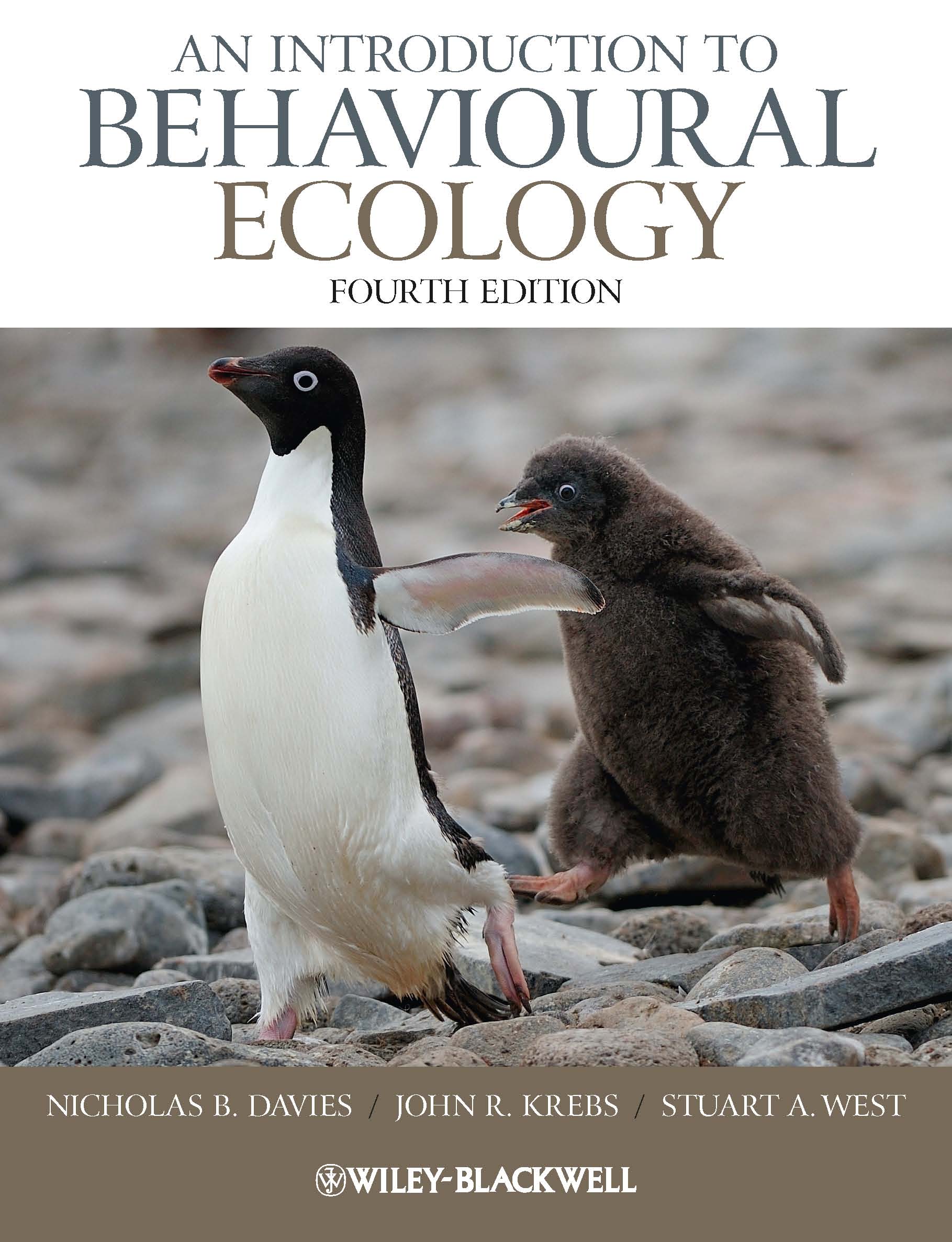 An
Introduction
to
Behavioural
Ecology
An
Introduction
to
Behavioural
Ecology
Published in 2012 by Wiley-Blackwell. Buy the book from Amazon
in the UK,
Reviews:
Nature, Animal
Behaviour, TREE,
J.
Evolutionary Psychology,
British
Ecological Society, Amateur Naturalist
Magazine.
Guardian 10 Best Nature Books
(March 2015).
Nicholas Davies, John Krebs &
Stuart
West
This textbook
helped to
define the field of Behavioural Ecology. In
this
fourth
edition
the
text
has
been
completely
revised,
with
new
chapters and many new illustrations and colour photographs. The theme, once again, is the
influence
of natural selection on behaviour – an animal’s struggle to
survive and
reproduce by exploiting and competing for resources, avoiding
predators,
selecting mates and caring for offspring, – and how animal
societies
reflect
both cooperation and conflict among individuals.
Written
in the same engaging and lucid style as the previous editions,
the
authors
explain the latest theoretical ideas using examples from
micro-organisms,
invertebrates and vertebrates.
There are boxed sections for some topics and marginal
notes help
guide
the reader. The book will be
essential reading for students of behavioural ecology and animal
behaviour.
Nicholas
B. Davies FRS is
Professor of Behavioural Ecology
in the Department of Zoology at the University of Cambridge
and a
Fellow of
Pembroke College.
John
R. Krebs FRS is
Principal of Jesus College and
Professor in the Department of Zoology at the University of Oxford, and a member of the House of
Lords.
Stuart
A. West is Professor
of Evolutionary Biology in
the Department of Zoology at the University of Oxford.
Chapters
1.
Natural
selection, ecology and behaviour.
2.
Testing
hypotheses in behavioural ecology.
3.
Economic
decisions.
4.
Predators
versus prey : evolutionary arms races.
5.
Competing
for resources.
6.
Living
in groups.
7.
Sexual
selection, sperm competition and sexual conflict.
8.
Parental
care and family conflicts.
9.
Mating
systems.
10.
Sex
allocation.
11.
Social
behaviours : altruism to spite.
12.
Cooperation.
13.
Altruism
and conflict in the social insects.
14.
Communication and signals.
15.
Conclusion.